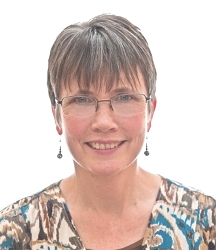 by Barbara R. Lester, LCSW – author of My Parent has an Autism Spectrum Disorder.
by Barbara R. Lester, LCSW – author of My Parent has an Autism Spectrum Disorder.
Increasing awareness of autism spectrum disorders (ASDs) has led to the increasing diagnosis of not only children who are on the autism spectrum but also adults. Over the past few years, there has been a proliferation of materials that educate parents about their children’s ASD diagnosis. Now we are becoming aware of a new need, and that is to educate children and teens about a parent’s ASD diagnosis.
One of the first tasks at hand is to explain an ASD to a young person in language that is both accessible and positive. One helpful approach is to teach children and teens is that ASDs are neurological differences. We can let them know that neurological means that the differences we are talking about are hard wired into how the brain and nervous system work. A person who does not have an ASD can be referred to as a “neurotypical,” which we can call “NT” for short. We can explain that an NT’s brain works in a “typical” or usual way. The brain of someone with an ASD works in an unusual (or “atypical”) way that can cause some problems for that person.
A difficult part is explaining why autism spectrum differences are generally called “disorders.” However, it can help to explain to children that some people do not think autism spectrum differences are truly disorders or problems, especially if the differences are mild in nature. Instead, some think these differences are just part of the normal range of human behavior.
It can also help to explain that one major difference between those on and off the autism spectrum is that people with ASDs generally have difficulty understanding and getting along with others. The child may know a person with a reading disability. This means that compared with others, that person has difficulty with reading, and needs extra help when they have reading that needs to be done. We could call having an ASD a social disability. Compared to the NTs, people with ASDs may have trouble making and keeping friends, or just may not be as interested in having friends. They may not understand other people’s thoughts and feelings very well, and they may have difficulty with understanding certain social clues such as facial expressions and personal space. Therefore ASD parents may need extra help and encouragement from their families when it comes to socializing with others. Alternatively, ASD parents may just need more acceptance from their families if it turns out they are not as interested in socializing as the NTs in the family.
Barbara R. Lester is a Licensed Clinical Social Worker in Salt Lake City, Utah. She has been a practising psychotherapist for twenty-five years, and works primarily with children, adolescents and their families. She provides parenting classes, social skills groups and individual and family counselling to families affected by Autism Spectrum Disorders. Her father, now aged eighty-eight, is on the autistic spectrum, giving her both a personal and professional outlook on issues related to ASDs.
Visit http://asdspecialist.com/blog for more info about Barbara and her work.
Her forthcoming book, My Parent Has an Autism Spectrum Disorder: A Workbook for Children and Teens, covers practical information on dealing with a parent’s initial ASD diagnosis from understanding special interests, difficulties with social skills and figures of speech, to the need for rules and routines and other topics. Click below for more info about the book.
Copyright © Jessica Kingsley Publishers 2011.